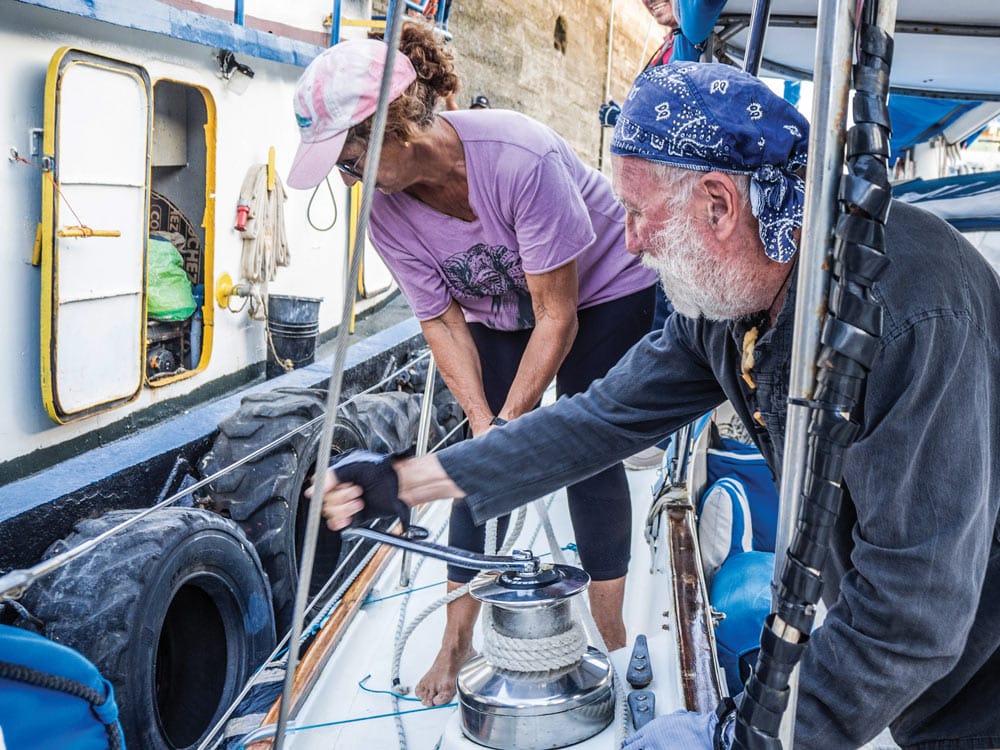
It’s not easy finding four line handlers smart enough to catch a rope and dumb enough to get involved with a Panama Canal transit aboard Ganesh, our hard-used 43-foot ketch. Here’s the truth of it: The only common denominator among my friends is that they lack judgment. Thus, I coaxed aboard Handsome Henry, of London; the notorious Sailor Sandy Lord, of Vermont; and Greg and Liz Ann Mulvany, of Lagniappe, a Pacific Seacraft 37 from New Orleans.
This wasn’t our first transit. My wife, Carolyn, and I have used Neptune’s Stairs so often the Panama Canal Authority gives us frequent-flyer miles. And our last transit had been a piece of cake. We’d center-locked through, with two other vessels rafted alongside as potential fenders. No problem; their crews did all the linehandling while I gave Carolyn a pedicure.
Still, a Panama Canal transit requires four physically able onboard line handlers regardless of the ease of passage, so Carolyn and I had no choice but to beat the bushes for the unwary.
Once we had our pickup crew aboard, we moved into place on the Flats to await our adviser pilot — on April Fools’ Day no less, which seemed wholly appropriate.
Here is a little-known fact: The poorly paid hands working on the lock walls in the canal don’t have iPhones, Sony PlayStations or Microsoft Xboxes. Thus, they are entertainment deprived, so they spend a lot of time on target practice with their encased-steel monkey fists (outlawed in most places), and are said to be able to hit the eye of a fly in midflight.
The guys on the wall can be dangerous, in other words. Before entering the canal, Carolyn had covered every solar cell and breakable object on the deck of Ganesh with mattresses held down with duct tape, or cockpit cushions tied off with string. I would have gladly worn a football helmet had I had one aboard.
Our first pilot was Roy, a careful man intent on doing a good job. “My transom backs to port,” I told him, just to let him know I understood prop wash and other esoteric nautical tendencies.
“No problemo,” he said. “Tranquillo!“
There was a problemo, however. A decrepit tug boat by the name of Tito One kept getting too close to us as we were awaiting our first lock. The tug was covered in rust, flaking paint and thick grease, and carried a battle-scarred crew to match.
There is a swift current as you enter the three-stage Gatun ascending locks, but it is on your bow and thus can be used as a brake. I felt in perfect control as I maneuvered to be center-tied between two other boats.
“No,” said our adviser Roy. “We side-tie to the tug.”
My cakewalk transit suddenly turned into a grease-smeared, tire-marked nightmare. The problem wasn’t merely that I didn’t want my vessel to touch the filthy Tito One. A commercial tug has its own agenda. When it needed to go to assist the ship locking through, it went. I’d best be able to grapple or untie in an instant if I didn’t want to be damaged.
“Do not worry,” said Roy. “We’ll be portside to, so your transom will tuck in easy.”
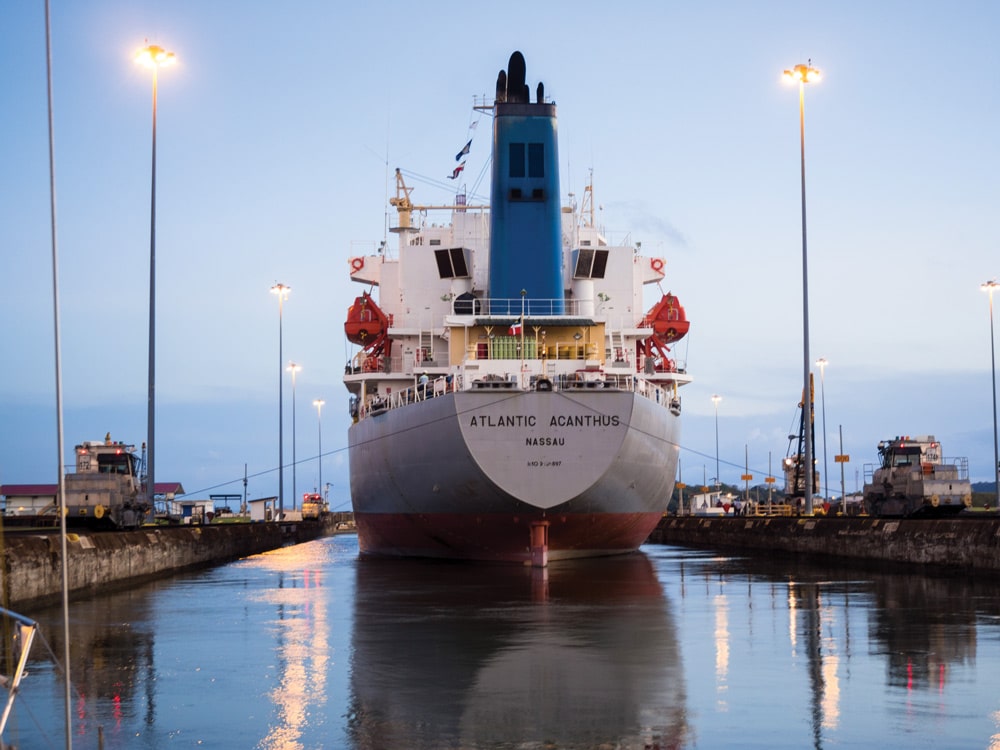
By chance, it was Handsome Henry standing by on my aft port cleat. Once Sailor Sandy realized she’d have nothing to do on starboard, she rightly went to gently assist nervous Henry.
Since I had the strong lock current to use as a brake, I was able to approach the tug, kick my stern in by tapping reverse and hold Ganesh stationary alongside, which was a good thing because there was no one to take our lines. Finally, a crewman wandered over and Handsome Henry handed him his stern line. Then we cheered. “Good job, Henry!” I said.
“It was easier than I expected,” he replied, grinning.
Alas, the deckhand who took our stern line disappeared without taking our bow line or springs, so I had to hold Ganesh in place with my engine until our pilot, Roy, corralled another crewmember to assist.
“No problemo with a side-tie,” said Roy with a smile, and who certainly would not be around when Carolyn and I buffed out our once-white topsides.
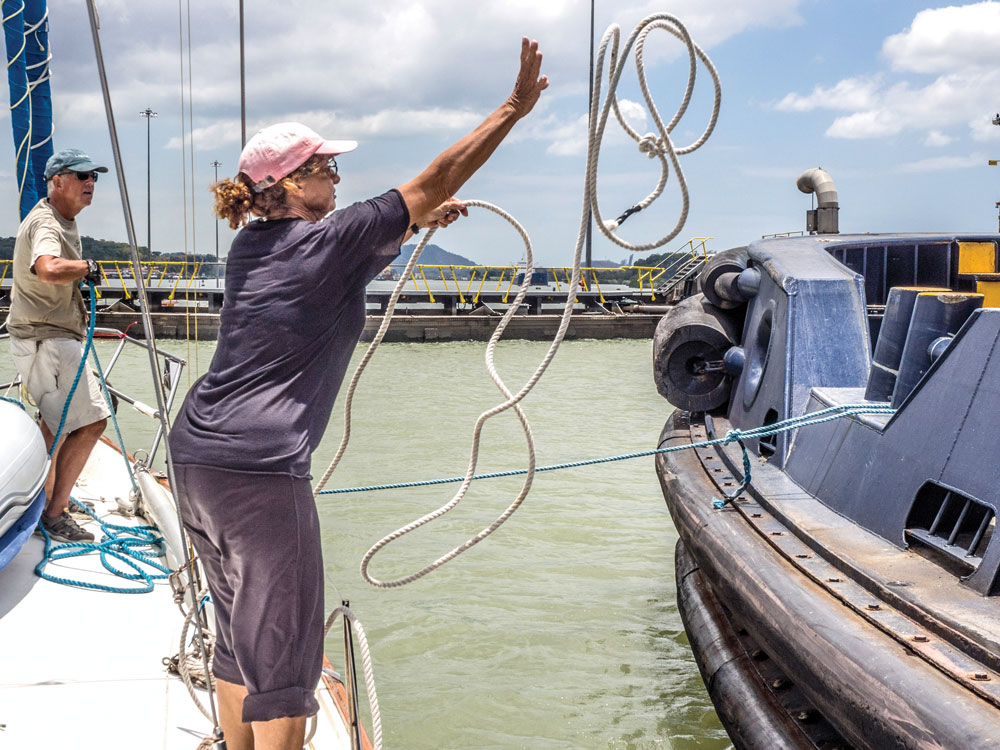
Suddenly, the water exploded all around us as millions of gallons rushed into Gatun lock at the same instant. Picture a toy boat buffeted in a strong Jacuzzi.
We instantly began to surge on our lines, but didn’t have to tend them for the rapid rise of water level because that was the job for the crew on the tug. Only they weren’t doing it. They’d all disappeared into the engine room on break.
I had a moment of panic. The stern of the tug pulled away from the wall and then swung wider. Both vessels surged back hard. Now the tug was 90 degrees to the wall, loudly smashing its rusty bow plates into the concrete. Just a few more meters of slack in the lines as we rose, and Ganesh‘s bow would be ground off. We all started screaming in unison. A sheepish crewmember ambled on deck, cigarette dangling from his mouth, and begrudgingly took in enough scope to prevent our being crushed.
It had been close, and I’d felt powerless. I was now on full alert, amazed to have been so near to disaster. Ganesh is everything we own, and she is uninsured. It would not take much of an accident to force us to abort our circumnavigation.
That evening, we moored in placid Lake Gatun, right around where a penniless Paul Gauguin (the French painter, pre-fame) shoveled dirt as his Spanish friends died of malaria.
I got a bad feeling in the pit of my stomach. We were going too fast toward the south lock gates even though I was in neutral.
On the way into the final series of three locks (there are a total of six), I told him what I’d told Roy: “My transom walks to port in reverse.” He showed no signs he understood.
Ganesh has a full keel. I cannot back her straight under most conditions. This makes close-quarters work stressful.
Once in the lock on the downhill descending side (Pacific) of Lake Gatun, I realized the current was behind us now, and stronger. I got a bad feeling in the pit of my stomach. We were going too fast toward the south lock gates even though I was in neutral. I tapped Ganesh into reverse, but she started to slew. I jammed her back into neutral to realign, but we had too much forward momentum.
To confound things, we would be tied starboard-to this time.
This was going to be tricky. I had planned on having the experienced Sailor Sandy make the line toss to the other vessel, but at the last minute, Ivan had told me to put my strongest man to starboard, aft. I would have preferred not to, but did not want to ignore my adviser. Plus, I was struggling with the current. So I asked Sandy to change places with Handsome Henry. It was a mistake on my part.
Henry thought he could hand the line over as before, but as I gunned it in reverse to slow, thanks to the prop walk, he got farther and farther away from Tito One. Everyone started yelling at poor Henry, especially the impatient guy on the tug. Henry sort of pushed and shoved the coil of line away from himself and it plopped into the water right next to Ganesh‘s prop.
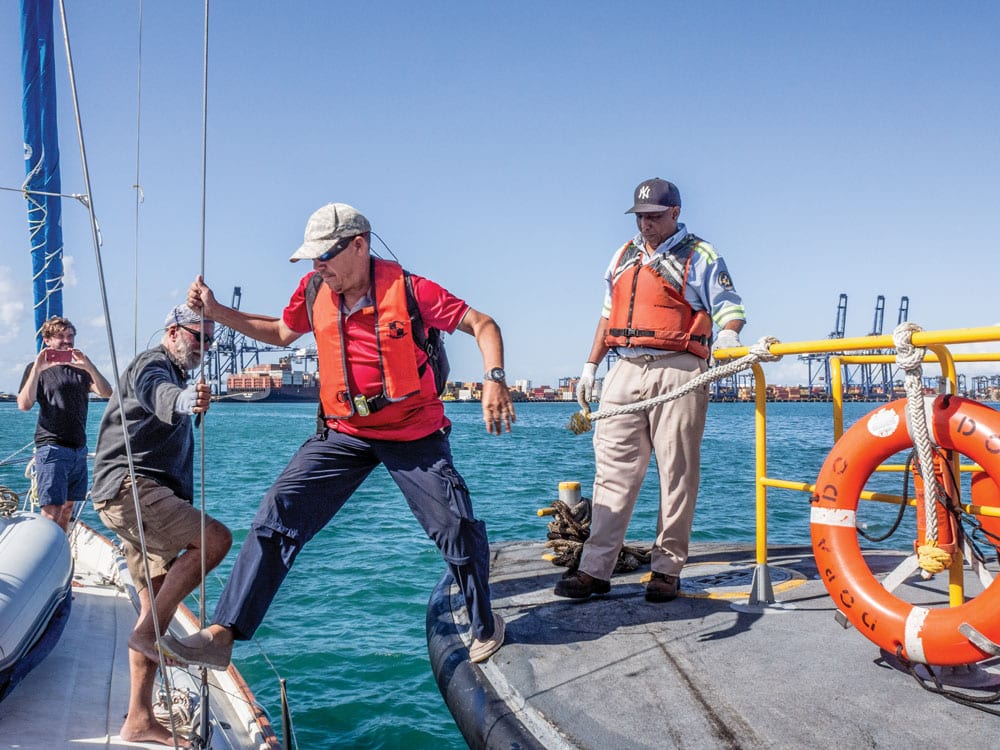
I am, perhaps, not the best skipper in the world, but I have spent a lifetime attempting not to make bad matters worse during an emergency.
“Sandy, help him keep it clear of my prop, OK?” I said as calmly as I could. And then, I did nothing.
This was very hard to do because we were still moving forward and Greg already had his bow line cleated off.
I did not shout. I did not make the newbie mistake of leaving my helm to help.
Sandy and Henry were asses and elbows as they desperately attempted to get the heavy hawser back aboard.
“Clear,” said Sandy, as I jammed Ganesh into full reverse, but a tad late as the bow line took up and my transom fully swung out.
“Slack, Greg,” I shouted forward and saw he understood what was needed. Greg was, all joking aside, magic on the foredeck.
He eased.
We were now sideways to the strong current in the lock, and I was just about to have my $4,000 Monitor windvane wiped off my transom by the east wall. I gave my Perkins M92B full power forward. The lock wall missed my Monitor by inches. But now my bow was lunging for the opposite side of the lock. It was clear to me that I was not going to have enough room to round up into the current before smashing hard into the gate. All I could do was buy time.
And I bought some, even though I was doomed.
Ivan, our adviser, suddenly came alive. He dashed forward and snatched the bow line from Greg. Then he yelled in Spanish for the tug crew to run it aft. Ivan moved as gracefully as a rotund ballerina as he trotted the heavy hawser aft at the same time. I suddenly realized he was more than an iPhone adorer, he was a sailor’s sailor who could think on his nimble feet.
Once Ivan had the long hawser aft on both Ganesh and the tug, he snubbed it off, and my bow straightened just before it rammed the lock door. Once straight, I was able to reverse with good effect, with Big Ivan grunting in the ensuing slack.
“You saved her,” I said to him in both admiration and appreciation.
“Only because you kept her off the wall long enough,” he replied.
We smiled at each other. I tipped my hat (well, my head scarf) to him.
“Well that deserves another Coke-with-ice for Ivan,” said Carolyn, and everyone laughed.
“Did I screw up?” asked Henry.
“Not at all,” I said. “The comedy of errors was entirely mine. Thank heavens for the fleet-footed Ivan.”
When things go sideways, there is only one person to blame on a boat, and that is its skipper.
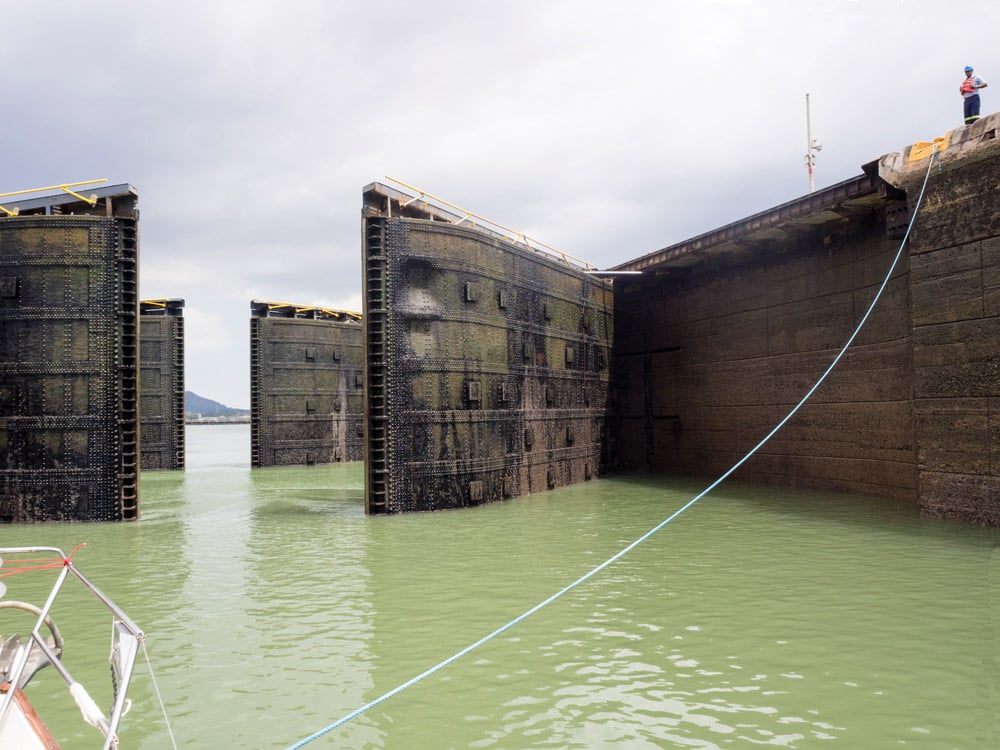
We all gave Ivan three loud and hearty cheers as the lock gates opened and we were spit into the Pacific. Well, almost. As Ivan was taken off by a crew boat, I told my mates, “There is only one more challenge: We’re going to refuel in Balboa.”
This was not easy, because a crowd of land sharks descended upon us at the fuel dock, demanding all manner of imaginative fees, charges and mystical payments. At one point, a dock hustler physically grabbed Greg, and I had to wade into the crowd of greed-heads to mellow things out.
“Fatty, I am ready to cast off,” yelled Carolyn loudly from the bow. I could plainly hear the worry in her voice.
I didn’t rush to step back aboard. After all, I am a captain. I calmly and lovingly hugged Greg, Liz Ann, Sailor Sandy and Handsome Henry goodbye and said, “Thanks. You guys were great. I would sail with you anywhere, anytime.”
“It’s been, well, like a dream,” said Henry, and there was a catch in his throat.
His hug was strong.
Then I was back aboard Ganesh, gunning her away from the dock as Carolyn tidied up our tangle of grease-caked dock lines. We’d already cleared out in Colón. We were free.
“Ready to relax at sea for the next 45 days or so?” I asked Carolyn.
She smiled. “I’m all yours,” she said, and meant it.
Sometimes, after 48 years of bluewater sailing together, I have to be careful not to tear up around my best friend, my lover and my wife.
I glanced up at my masthead Windex. The wind was fair.
“Take the wheel,” I told her. “I’ll hoist the main.”
Cap’n Fatty and Carolyn are wrapping up three months in French Polynesia and setting sail for Tonga.








